Wood Types
We offer a large selection of rough cut lumber and live-edge wood slabs at Saw Logs to Lumber. Live edge slabs showcase the natural edge of the tree, ensuring each piece is one of a kind and adds character to any space. Missouri offers over 100 species of beautiful wood, and we’ll work with any of them, but these are types of wood we almost always have on hand.
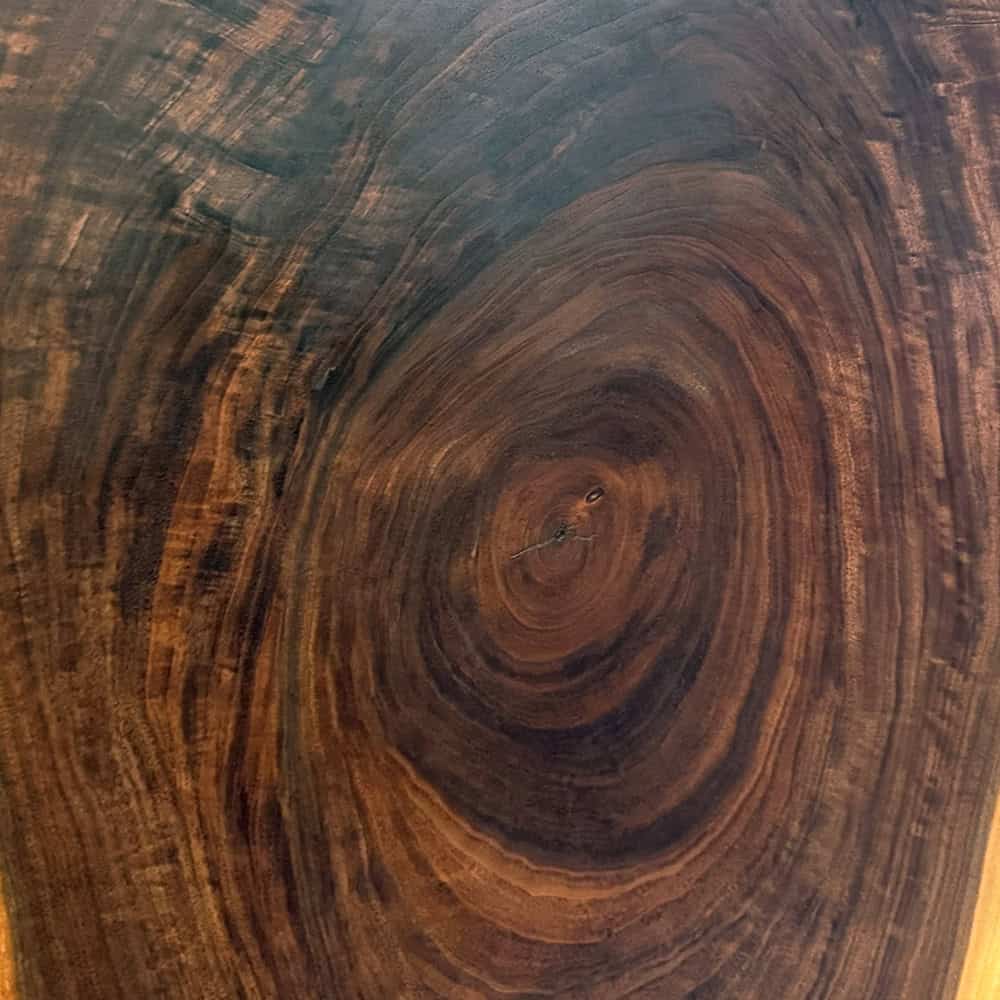
Walnut
Walnut is a hardwood known for its durability and deep, rich color—it’s heavy, resilient, and doesn’t shrink or warp. While walnut wood typically produces a straight grain, you can still find unique slabs with natural irregularities like waves, curls, crotches, and burls. Whether you’re looking for a statement piece or reliable material, walnut wood is an excellent choice with its blend of beauty and strength.
- Appearance: Ranges from light brown to deep chocolate hues with striking grain patterns
- Durability & Strength: Known for its resilience and natural resistance to wear and rot, making it ideal for long-lasting furniture.
- Hypoallergenic: With the absence of sap and resin (common allergens in other wood types), walnut wood is an excellent choice for those with sensitivities
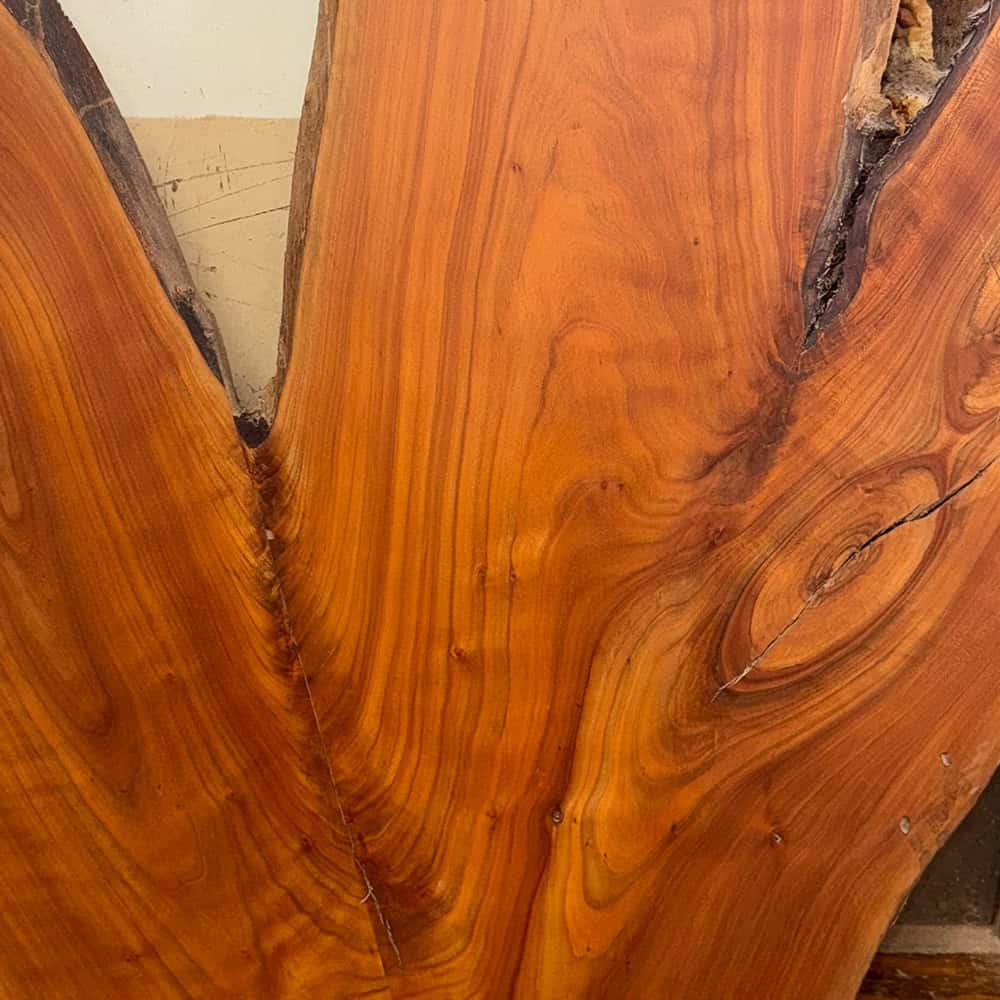
Cherry
Cherry wood is a popular hardwood that ages beautifully. As it matures, the color deepens and develops into a rich, warm hue that makes it highly valued and sought after. Plus, Cherry wood is often used to create musical instruments due to its excellent acoustic properties.
- Appearance: Starts out light pinkish-brown and deepens to a rich reddish-brown over time with a straight, satiny texture and uniform grain with occasional curls
- Durability & Strength: Cherry is a stable yet flexible hardwood, resistant to warping and shrinking
- Ages Beautifully: Darkens naturally with light exposure, enhancing its warmth and character over time
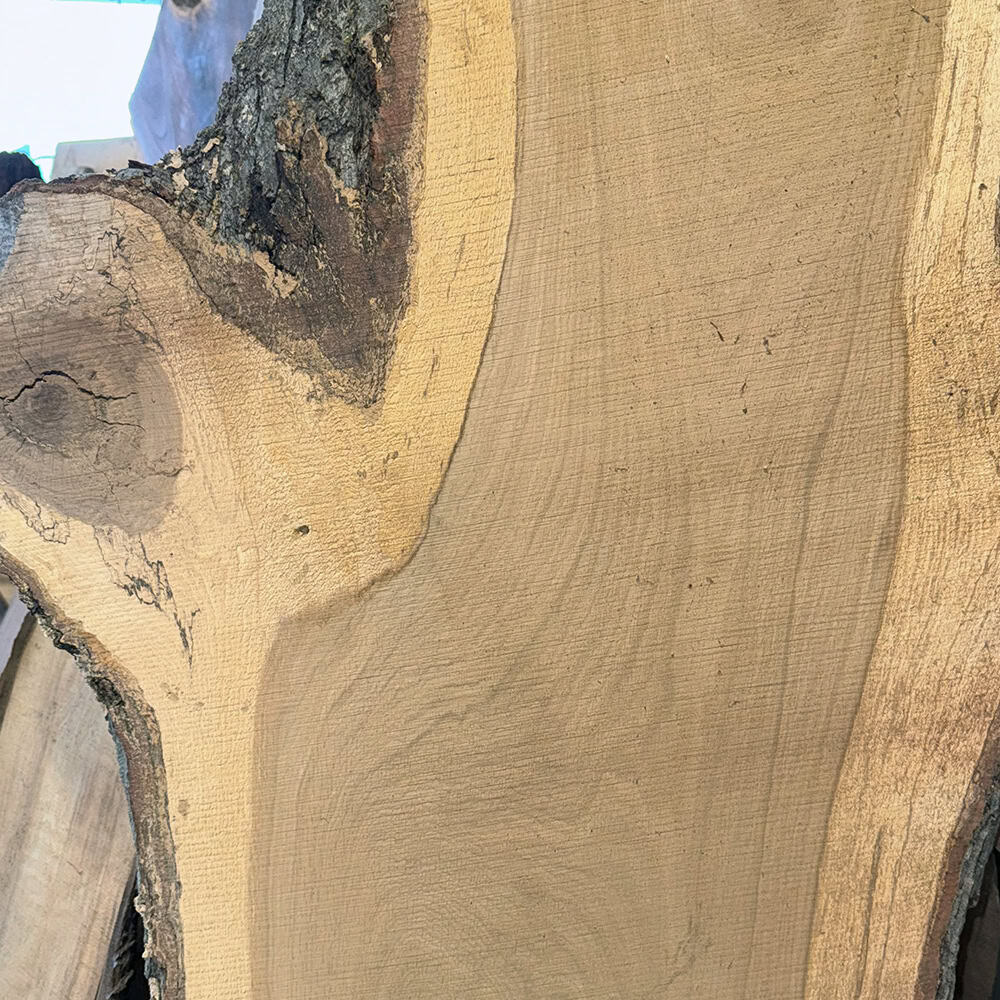
Oak
You can use Oak for just about anything, so it’s no surprise that it’s one of the most widely utilized hardwoods—it is strong, durable, and naturally resistant to insects and fungi. Plus, due to its light color, it takes on stains and finishes nicely.
- Appearance: White Oak is a light to medium brown with olive or gray undertones. Red Oak offers warm, reddish-brown hues with a slightly pinkish tone. Overall, Oak has a strong, well-defined grain pattern that is typically straight but sometimes has wavy or interlocking patterns.
- Durability & Strength: Oak is dense, resilient, and highly resistant to wear
- Water-Resistant Properties: When quarter-sawn, white oak is essentially waterproof, making it ideal for whiskey barrels, boats, and outdoor use
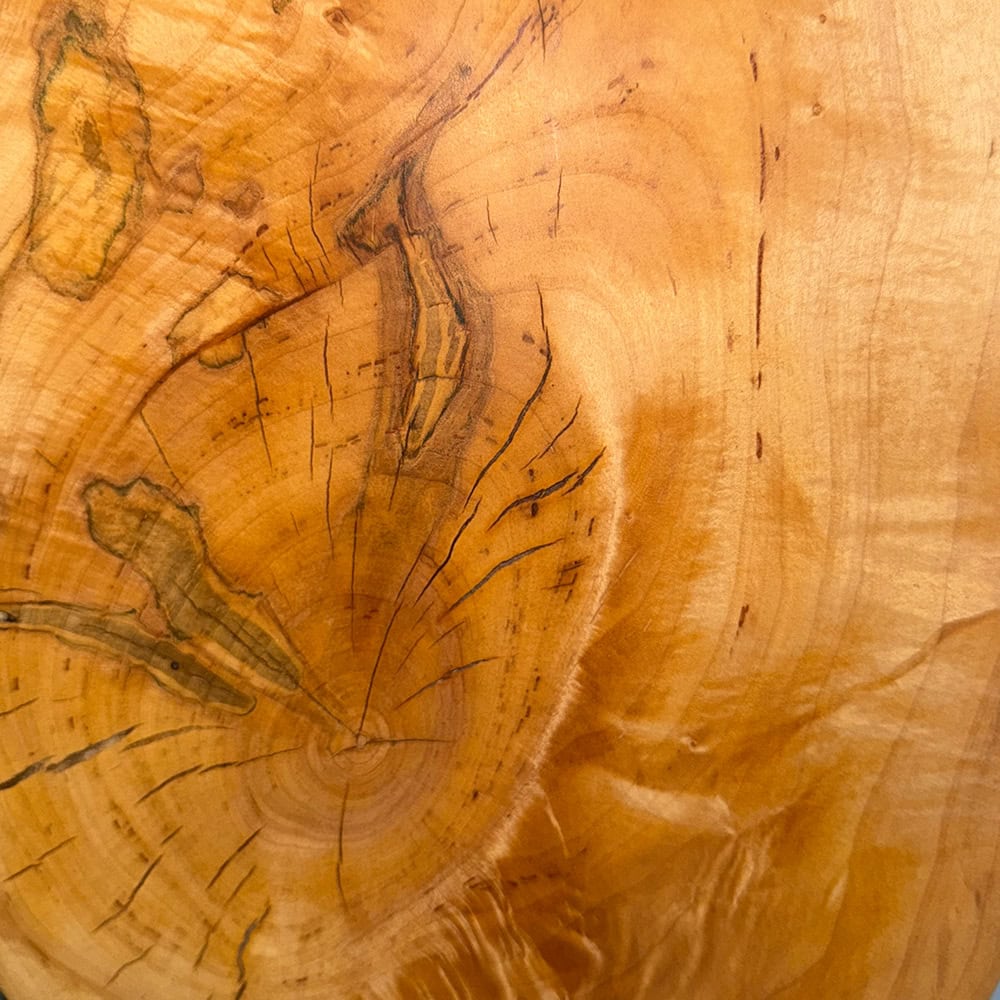
Maple
Maple is a hardwood that can have intense grain patterns known as curly or fiddleback, giving the wood a unique and striking look. Like Cherry wood, Maple is often used to craft instruments due to its superb acoustics and remarkable appearance.
- Appearance: Ranges from creamy white to light golden hues and can feature spalted, curly, or fiddleback grain. Due to its light color, it can be stained or finished to complement various design styles.
- Durability & Strength: Maple is a dense and durable hardwood, resistant to dents and scratches, and holds up well under heavy use.
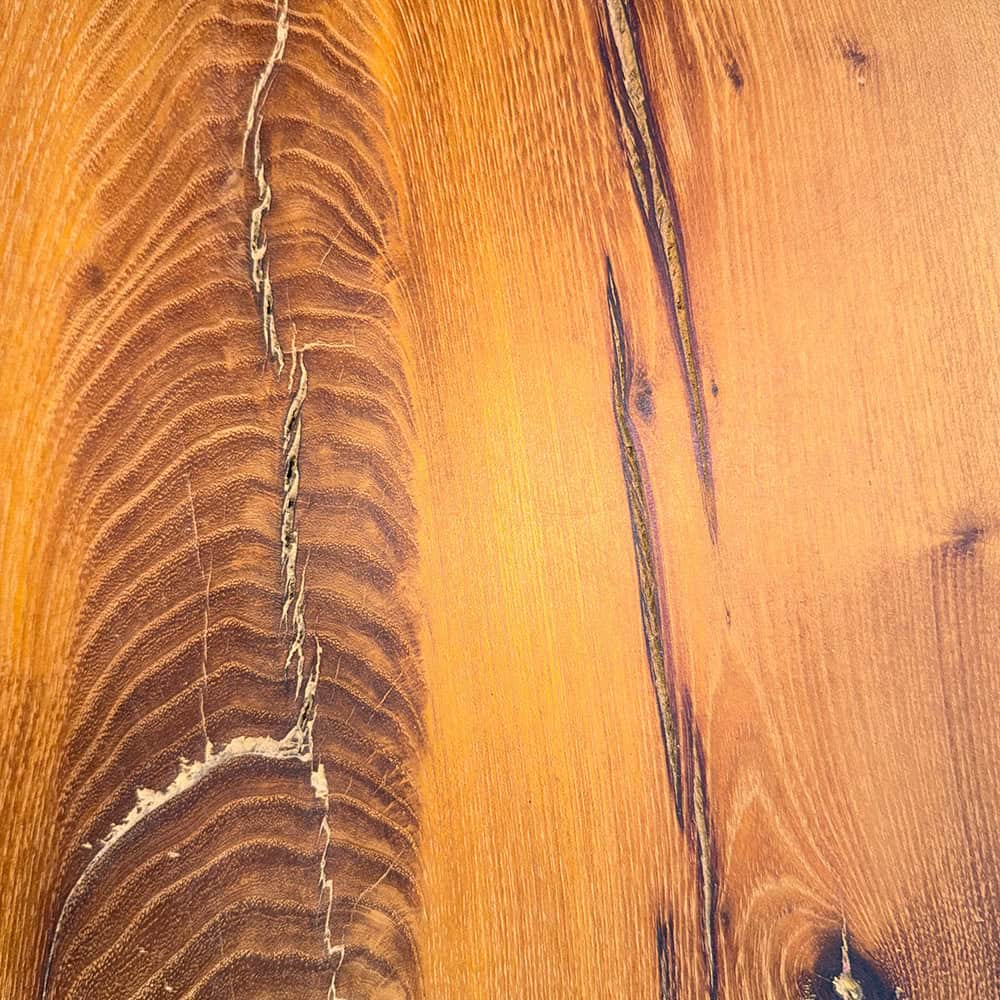
Osage Orange
Known as the hardest wood in North America(and also one of the heaviest), Osage Orange is the kind of wood you use when you want something to last a lifetime. This wood burns incredibly hot and is typically used for bows and barns, as it is extremely resilient and durable.
- Appearance: Starts as a bright yellow or golden-orange with red streaks and deepens to a rich brown over time, and due to its density, it polishes to a glossy, almost glass-like finish.
- Durability & Strength: Osage Orange wood has exceptional hardness and strength, giving it a high resistance to wear and impact. It also naturally repels rot, moisture, and insects, making it ideal for outdoor use.
- Spark-Resistant: Due to its extreme density, Osage Orange is spark-resistant, making it ideal for tool handles or where sparks are present and dangerous.
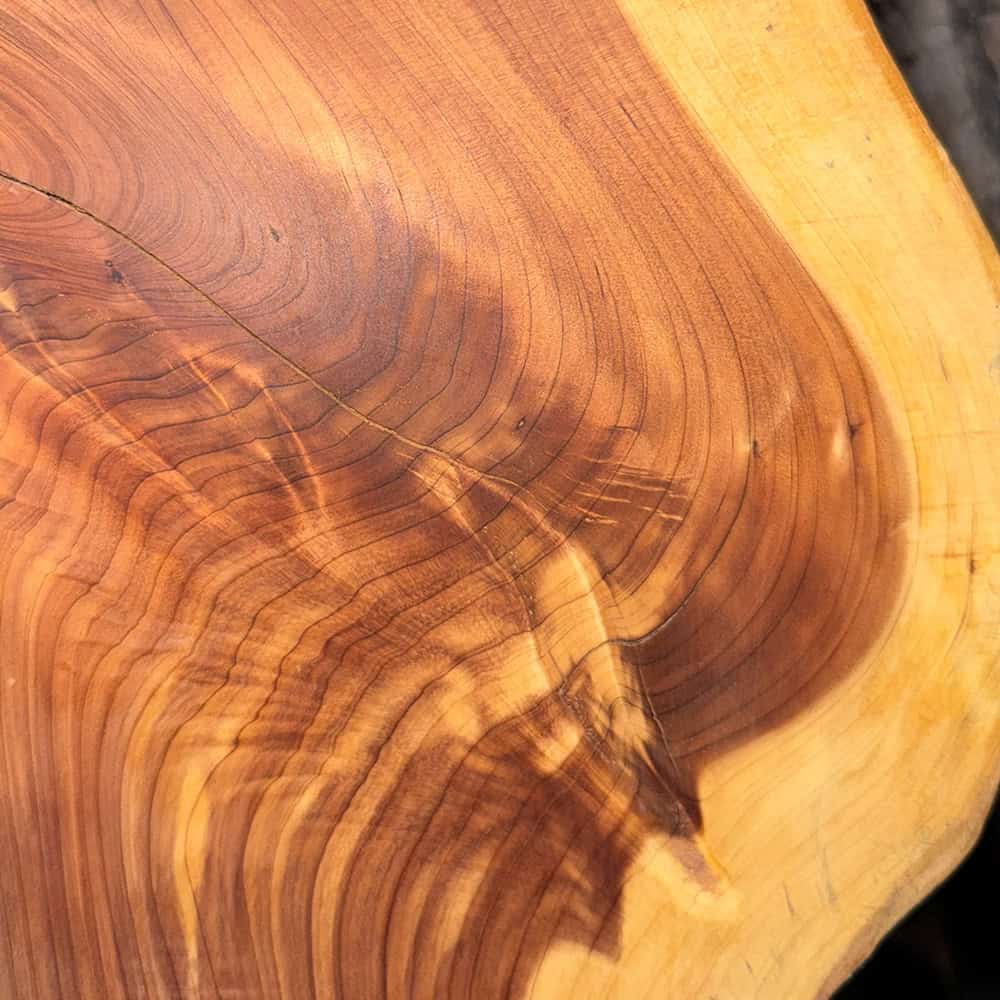
Cedar
Cedar is a softwood that does well indoors and outdoors, as it can endure varying temperatures, moisture, and UV exposure. Plus, it has a pleasant and distinct smell that is a natural repellent against pests like moths and spiders, making it a popular choice for closets, dressers, and storage chests.
- Appearance: Features warm reddish-brown hues with a straight, fine grain that enhances its rustic charm
- Durability & Strength: Cedar is lightweight yet strong and repels moisture, insects, and decay, making it ideal for outdoor use
- Distinctive Aroma: Radiates a pleasant, natural fragrance that deters pests and enhances spaces
- Naturally Insulating: Cedar is also a natural insulator, which is why it’s commonly used in saunas and wardrobe linings.
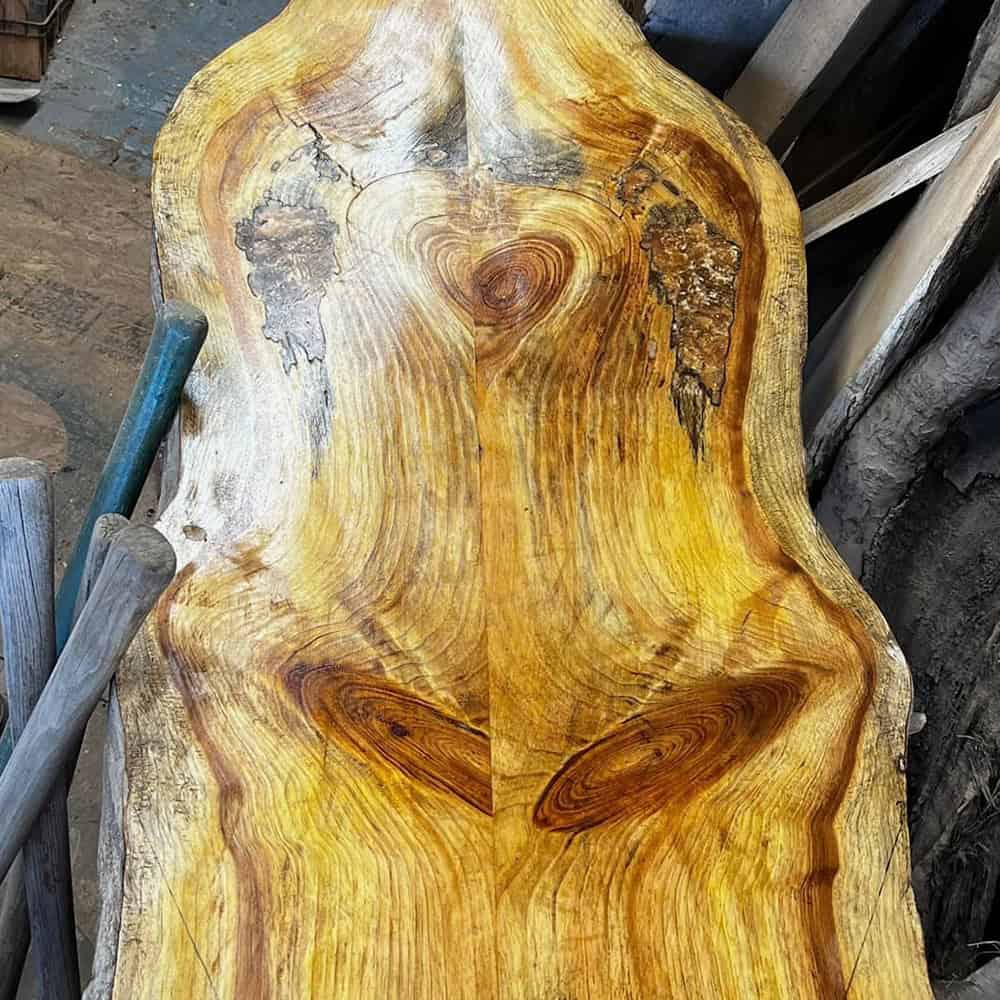
Pine
A popular softwood, Pine is versatile, lightweight, and can be used structurally. Pine is also known for its affordability and easily absorbs stains and finishes, making it adaptable to various styles.
- Appearance: Ranges from blonde to golden brown and features a straight grain that tends to produce a lot of knots, giving it a rustic vibe
- Durability & Strength: Does well under pressure, offering good strength for structural use while still being pliable
- Aroma: Due to its natural resin, Pine gives off a desirable woodsy scent.
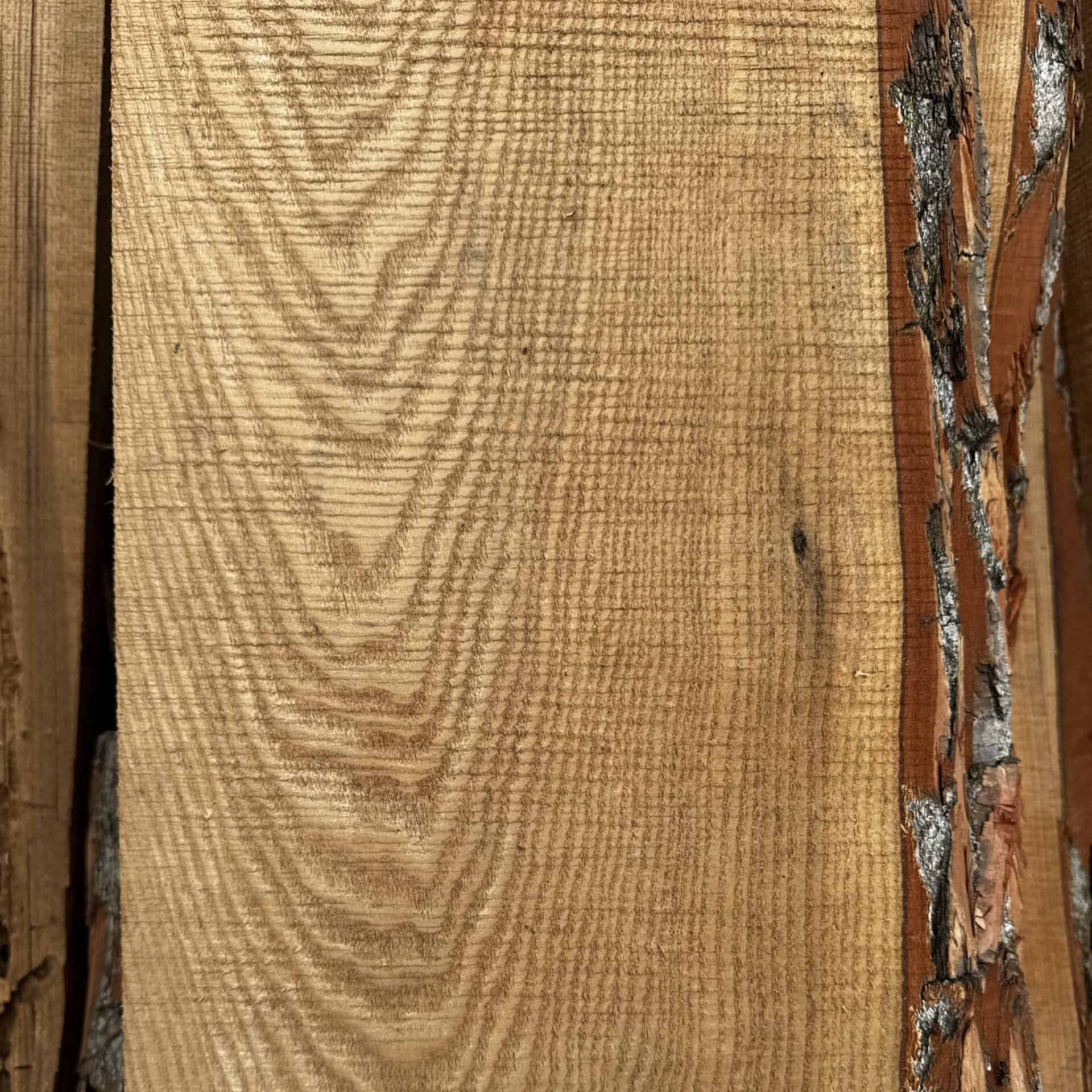
Sassafras
Sassafras trees have a unique and fun history as their leaves have historically been used on wounds for their healing properties, and their root bark was once used to make root beer! Sassafras is another excellent hardwood and is more lightweight than some other species, making it easy to handle and work with.
- Appearance: The sapwood is typically a paler yellowish-tan, while the heartwood can show up as light/medium brown with an orange or olive hue.
- Durability & Strength: Naturally resistant to insects and rot, making it suitable for outdoor use. While Sassafras is a moderately strong hardwood, it’s not ideal for heavy load-bearing projects.
- Distinctive Aroma: The leaves and wood of Sassafras trees give off a sweet, spiced fragrance.
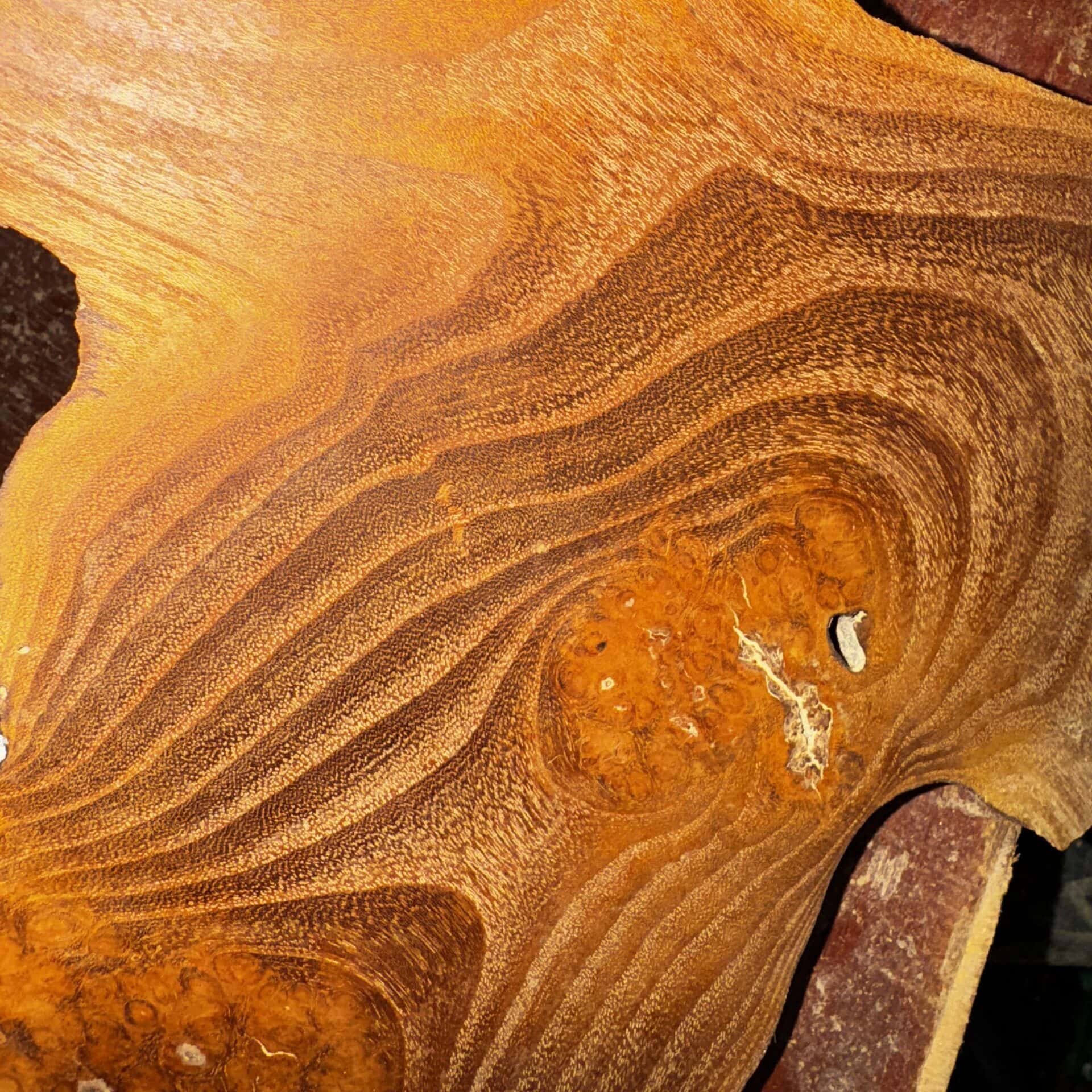
Mulberry
A mighty hardwood, Mulberry wood is similar to Osage Orange as it is stronger than Oak, Cherry, and Walnut. In some cultures, it’s considered a sacred tree and is often used in traditional Asian furniture and instrument making.
- Appearance: Varies from a golden honey to a reddish brown with an open grain.
- Durability & Strength: Resistant to decay, insects, and denting under heavy impact.
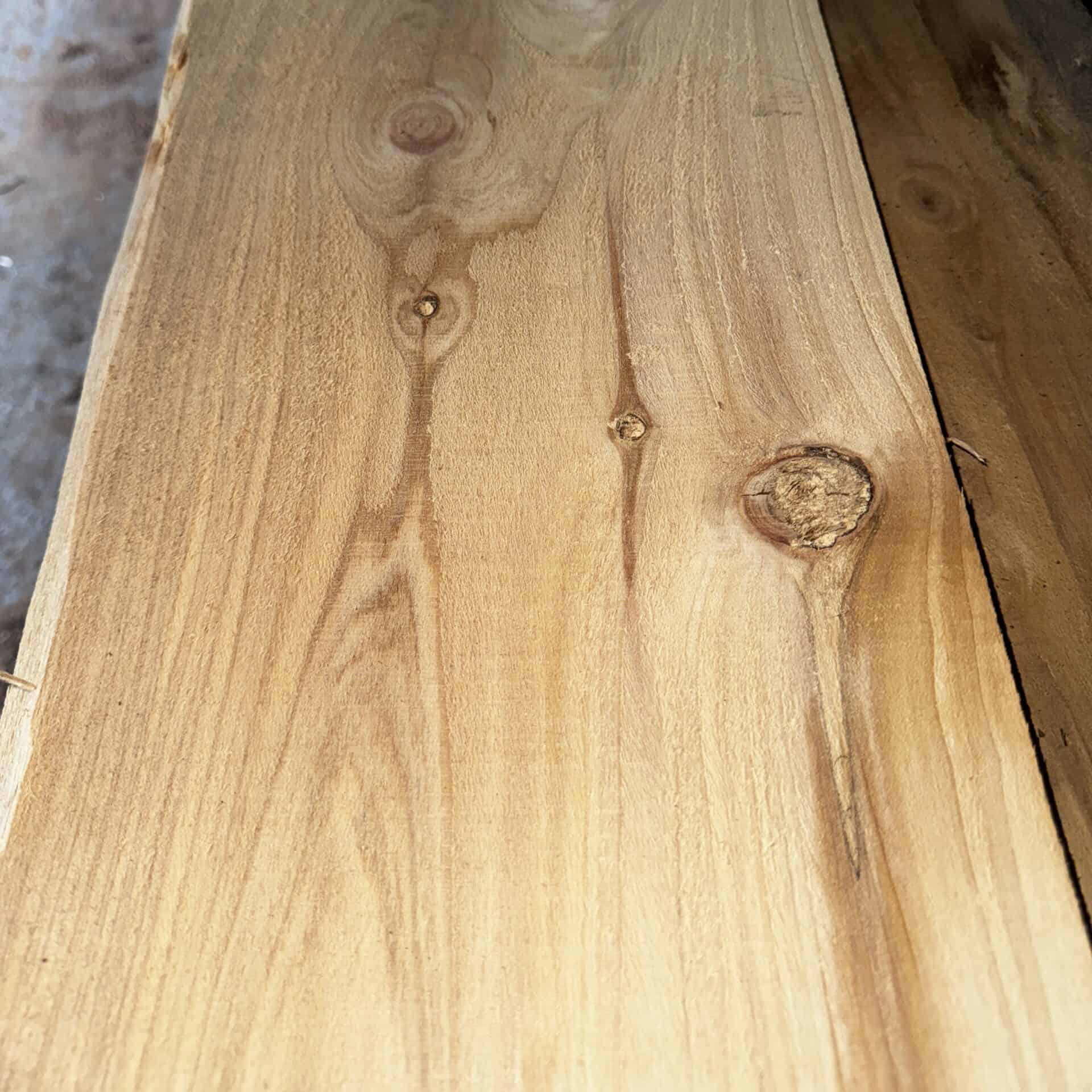
Cypress
While Cypress wood is technically considered a softwood, it tends to act more like a hardwood. It’s strong and has a tight grain and growth ring like common hardwoods, but is easy to work with and more lightweight like most softwoods. Cypress wood also contains natural oils that act as preservatives.
- Appearance: Typically, a light blonde color with sapwood that can show up almost white with occasional knots and swirling patterns in the grain.
- Durability & Strength: Withstands warping, shrinking, and wet environments, making it a great choice for outdoor use. Cypress wood also offers excellent dimensional stability as it’s not prone to splintering, warping, or cracking.
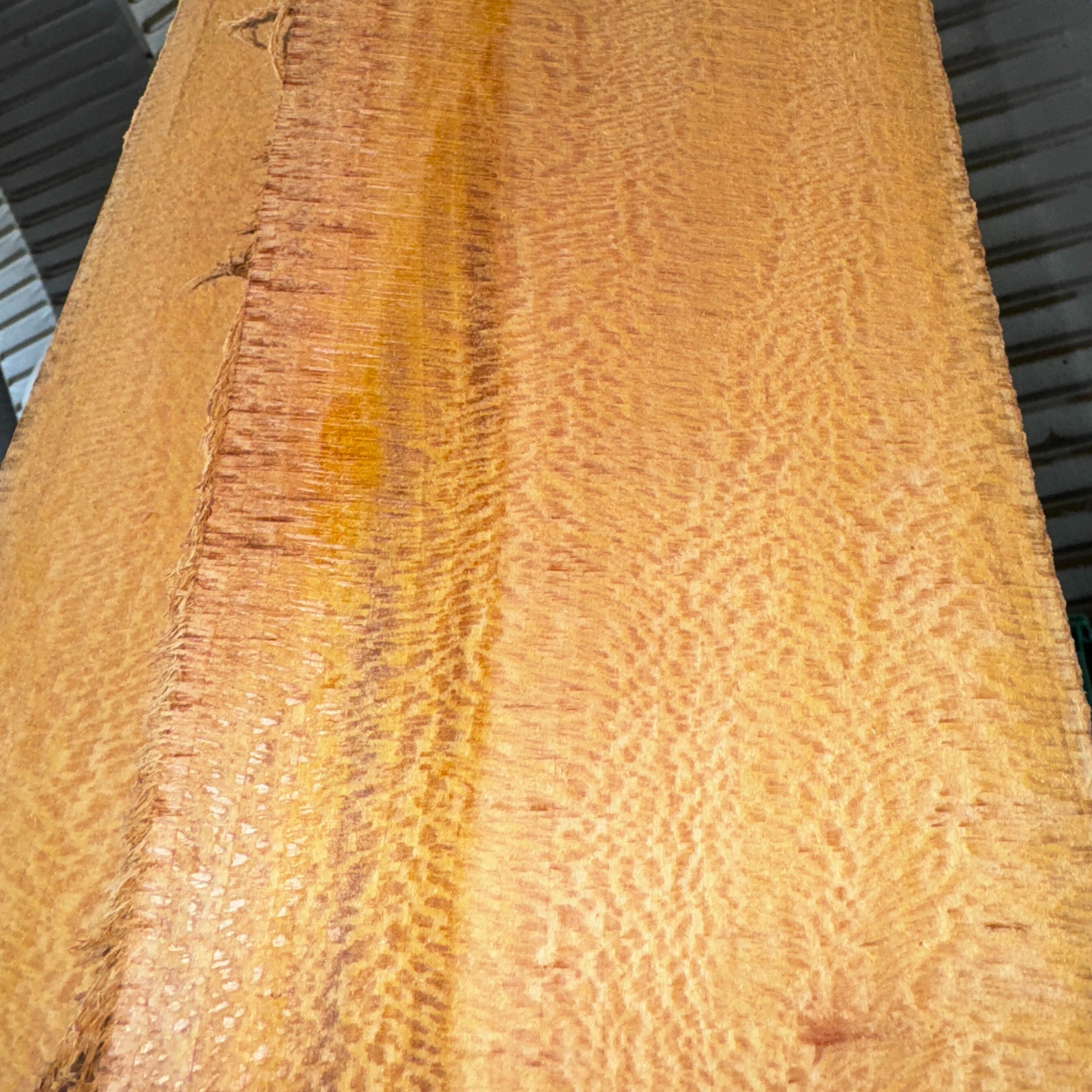
Sycamore
Sycamore is a hardwood that is mostly made up of sapwood. Due to the wood’s distinctive freckled lace-like pattern when quartersawn, Sycamore is sometimes referred to as “Lacewood.”
- Appearance: Sycamore offers a color range of pale cream to light beige with sometimes a slight pink or reddish hue that looks silky when finished.
- Durability & Strength: Not very rot-resistant, so Sycamore is best for indoor use. It offers moderate structural strength but is best used in low-stress applications.
Tour our Woodshop
Visit us at 3540 North Highway 94 St. Charles MO 63301 to view our showroom!
